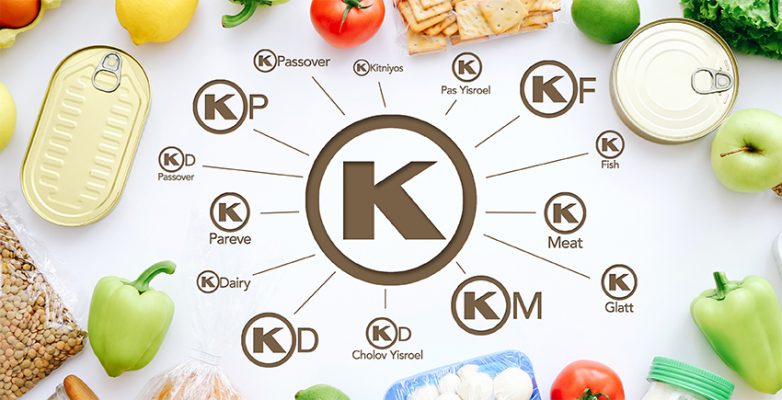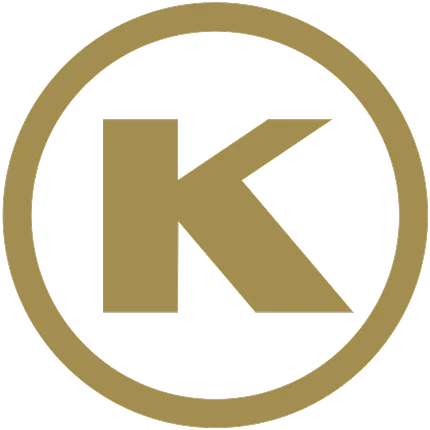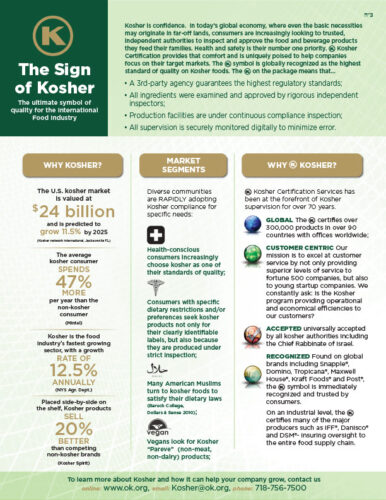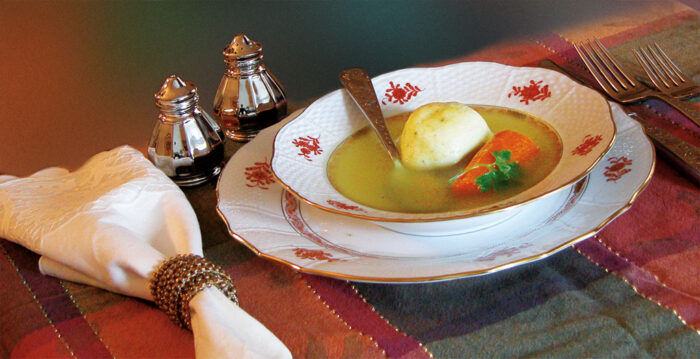
Kosher symbol restrictions: What are the various accompanying letters to the kosher logo?
Whether you’re researching different kosher certifiers, you’re in the stage of prepping your product line to become kosher certified, or simply seeking to learn what the kosher logos all stand for, there are some basics you need to know. In this article, we’ll focus on our own trademarked kosher symbol, sometimes referred to as the Circle-K kosher symbol. This is the bold letter K in a circle, representing products and eateries expressly under OK Kosher Certification.
Why Are There Different Kosher Symbols?
All reputable kosher certifiers utilize a set of widely-held, orthodox kosher standards. The separation of meat and dairy are a key principle in kosher law. So any reliable hechsher (Hebrew for “approval”, but commonly refers to the trademarked kosher symbol of the agency certifying a product) must specify which kosher category a product falls under.
The various letters that may appear next to the kosher logo represent the kosher ‘symbol restrictions.’ These tell you exactly what status a kosher product has. A kosher symbol accompanied by any of these words or letters mean different things.
The Types of Kosher Symbols We’ll Discuss:
- OK (unaccompanied) or OK Pareve – Kosher Pareve
- OK D – Kosher Dairy
- OK DE – Kosher Dairy Equipment
- OK D CY – Kosher Cholov Yisroel Dairy
- OK M – Kosher Meat
- OK P – Kosher for Passover
- OK PY – Kosher Pas Yisroel
- OK F – Kosher Fish
At first glance, it’s a bit of a cryptic alphabet to decode. But have no fear, we’re here to explain them all. In fact, we think this is the most comprehensive guide to kosher symbols on the internet. So look no further than right here.
Kosher Pareve Symbol – OK or OK Pareve

Simply put, the OK Kosher symbol, unaccompanied or with the word “Pareve” written near it, represents a product that’s neither dairy nor meat.
Kosher Pareve is the kosher symbol you’ll see most often, as it represents the most common kosher category of foods. Pareve is Hebrew for ‘neutral.’ This refers to foods that don’t contain any dairy, meat or poultry ingredients or their traces. Furthermore, foods can only be deemed Pareve when they haven’t been heated or prepared with any dairy, meat or poultry foods. This is because one of the foundational kosher dietary rules is the separation of dairy from meat or poultry. People who keep kosher will wait anywhere from one to six hours after eating meat or poultry before eating dairy. This makes the designation of Pareve absolutely essential to kosher certification.
It’s important to mention that the OK symbol with the letter P next to it denotes Passover certification, not Pareve. The product may still be Pareve, but without that P, it isn’t certified for Passover.
Kosher species of fish, as well as eggs from kosher animals, are also Pareve according to Kosher Law. This runs contrary to a mistaken notion out there that Pareve is tantamount to vegetarian, vegan or plant-based.
As part of a kosher lifestyle or regulatory program, utensils used for meat and poultry are kept separate from those used for dairy. Separate heating elements, cookware, dishwashers and sinks are used for each category too. Likewise, Pareve-designated utensils are kept solely for Pareve use.
Pareve foods – can (almost always) be eaten with anything else, and with no waiting period in between.
Pareve utensils and cookware – only to be used with Pareve foods, in order to retain Pareve status.
Kosher Dairy Symbol – OK Dairy, or OK D Symbol

The OK symbol with a D or the word “Dairy” next to it means you’re looking at either a kosher dairy product or a product containing kosher dairy ingredients. Dairy ingredients are only kosher if they came from the milk of a kosher animal.
Kosher Dairy Equipment – OK DE Symbol

Now that you understand the meaning of Kosher Dairy, let’s unpack Kosher Dairy Equipment. The OK DE symbol stands for Kosher Dairy Equipment and refers to an essentially Pareve product that was made on thoroughly cleaned lines, that were not kosherized after a prior run of a dairy product.
This means, for instance, that if a person who keeps to a kosher diet ate meat or poultry, they could then eat a Kosher DE product very soon after. However, because it was made on equipment used for dairy, the person won’t eat it at the same time as or prepare it with a meat or poultry product.
In many cases, a product is not eligible for Pareve, but is eligible for Dairy Equipment. The company may opt for a status of Dairy but, to offer the end consumer more flexibility, may choose the OK DE restriction as an alternative. The OK DE symbol is a step toward further transparency on the label, as well.
Kosher Dairy Cholov Yisroel – “Super Kosher Dairy” – OK D CY Symbol

Beyond that, here’s one more symbol to throw into the mix. Kosher D CY stands for a dairy certification with the added level of Cholov Yisroel. Literally translated as “Jewish Dairy,” this higher level of supervision denotes that an observant Jew (i.e. the kosher field rep; the Mashgiach) was present for the entire production process, from milking the cow to product packaging.
The original reason this rule was established was to make sure that kosher milk was not diluted with milk from a non-kosher animal. This once-common practice used in times of shortage created the need for Cholov Yisroel as a basic requirement. However, as food industrialization became the norm in the developed world, latter-day authorities in Kosher Law deemed governmental regulatory bodies such as the FDA sufficient in this regard.
Therefore, you can be assured that OK D (without the CY) certified foods are absolutely free of non-kosher milks. However, some more stringent Jewish communities still demand Cholov Yisroel supervision as an adherence to the original source law. For this reason, we offer both levels of certification.
In addition to Orthodox Jewish communities worldwide, the Cholov Yisroel level of certification is a requirement for many dairy products to be imported to Israel. Our affiliate office in Israel is ready to help companies gain acceptance of their products given our longstanding relationships with the Israeli Rabbinate (Rabbanut), and familiarity with their guidelines. As a general rule, you should always submit product labels for the Israeli market to OK Kosher for evaluation first so we can confirm that they comply with Israeli regulations.
Kosher Meat – OK M Symbol

OK M stands for Kosher Meat, and applies to foods that either are, or contain, kosher meat or poultry. Meat-derived ingredients are only kosher if they came from a kosher species of bird or land animal. Kosher land mammals are ruminants (chew their cud) that also have cloven (split) hooves. As for birds, the the Torah lists the prohibited ones by name.
What is Glatt Kosher?
Glatt Kosher represents an extra level of quality control for kosher meat or poultry. By default, all OK Kosher certified meat products are Glatt.
Glatt is a Yiddish word meaning “smooth,” referring to the animal’s lungs. A specially trained expert checks the slaughtered animal’s lungs manually to determine whether it has any adhesions or lesions inside. If all is smooth, the meat is Glatt.
Technically, the Glatt standard in kosher law only applies to land animals, such as cow and sheep. By definition, there is no such thing as Glatt poultry. However, the term became so widely used over the decades that, colloquially, people started applying it to poultry to denote generally high standards. Thus, it’s now common practice to refer to poultry certified to a high kosher standard as Glatt.
Other terms may accompany a Glatt Kosher certification, such as Chissdishe Shechita or Beit Yosef. These specifications are based on particular community standards, such as Hassidic or Sephardic. In these cases, kosher rabbis from these communities involved themselves in the production process in order to ensure adherence to their community’s customs.
Kosher for Passover Symbol – OK Passover, OK P Symbol

OK P stands for Kosher-for-Passover certification. Passover, or Pesach in Hebrew, is an eight-day Jewish holiday in which the use of certain grains are forbidden except in the making of a special ritual flatbread known as Matzah. During this time, not only do observant Jews not eat the forbidden grains, but Jews aren’t allowed to own or even see them in their homes and communal spaces. In line with this, all manufactured foods that observant folks consume or buy during Passover must be certified Kosher-for-Passover. This applies even if the mentioned grains don’t appear in the ingredients list.
At OK Kosher, we require a special level of supervision for these sensitive productions. We spare no effort in certifying them to the highest possible level for Passover.
A Note on Combined Kosher Symbol Restrictions
You may come across products with both Passover and another kosher restriction next to the OK symbol. This is simply because Kosher-for-Passover products can be any of Pareve, dairy or meat. When a Passover product is also of a dairy or meat status, you’ll see the relevant accompanying letters along with the P for Passover.
What is Kitniyot, or Kitniyos?
Here’s a good place to mention Kosher-for-Passover Kitniyot (or Kitniyos, depending on regional pronunciation). As kosher law developed in the diaspora, Jews of Ashkenazi and Sefardi descent took on different customs. Kitniyot is a category of foods, loosely pertaining to legumes and some seeds that Ashkenazi Jews generally don’t eat on Passover, but many Sefardi Jews do. OK Kosher certifies foods in this category, all of which will clearly feature the word Kitniyot next to or under the letter P.
Kosher Baked Goods – OK Pas Yisroel Symbol

The OK Kosher symbol accompanied by either PY or “Pas Yisroel” represents the Kosher Pas Yisroel standard. This can apply to any grain flour-based, baked food. Literally translated as “Jewish Baked Good,” this distinction denotes that an observant Jew (i.e. the kosher field rep, or Mashgiach) participated in baking it. Similarly to Cholov Yisroel, Pas Yisroel is not always an absolute requirement but preferred in many communities and generally broadens a product’s appeal. The Pas Yisroel standard is also a Rabbanut requirement for import to Israel.
Kosher Fish – OK F Symbol

The OK symbol accompanied either by the letter F or the word ‘Fish’ represents a product that contains fish-based ingredients. You may be wondering about the need for this when, as we mentioned earlier, fish is Pareve. The reason is for the prohibition in Torah Law (though not technically Kosher Law) against eating meat and fish at the same time. This rule does not require separate cookware, washing procedures or even down time between eating the two food types. However, being that kashrut is an area of Torah Law, kosher certification agencies encourage companies making fish-based products to label them as such.
A Clear Conclusion
We hope this article has been helpful in parsing through the various kosher symbols, kosher symbol restrictions, and the different levels of kosher certification available. You’ve now equipped yourself to consider kosher certification for your brand, or go on a fully informed kosher shopping trip. See if you can spot some of the ones we discussed next time you’re in a supermarket!
If you’d like to learn more about kosher, or how to pursue certification for your company, check out:
The Basics of Kosher and
OK Kosher Application Process
To speak to a Certification Specialist call us at (718) 907-9558, email [email protected], or submit a free application online:


 EN
EN  ZH
ZH  KR
KR  BR
BR  ES
ES  IN
IN  IL
IL 



